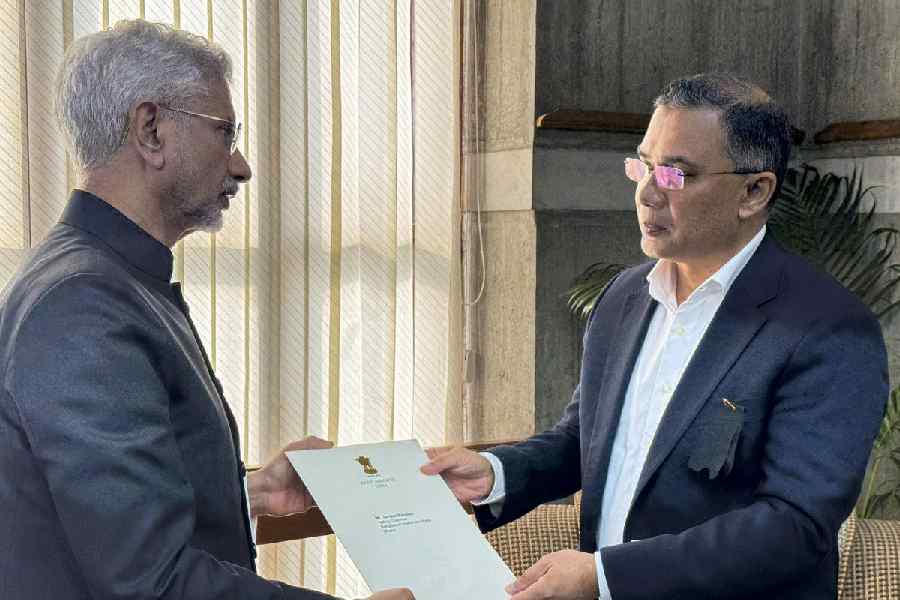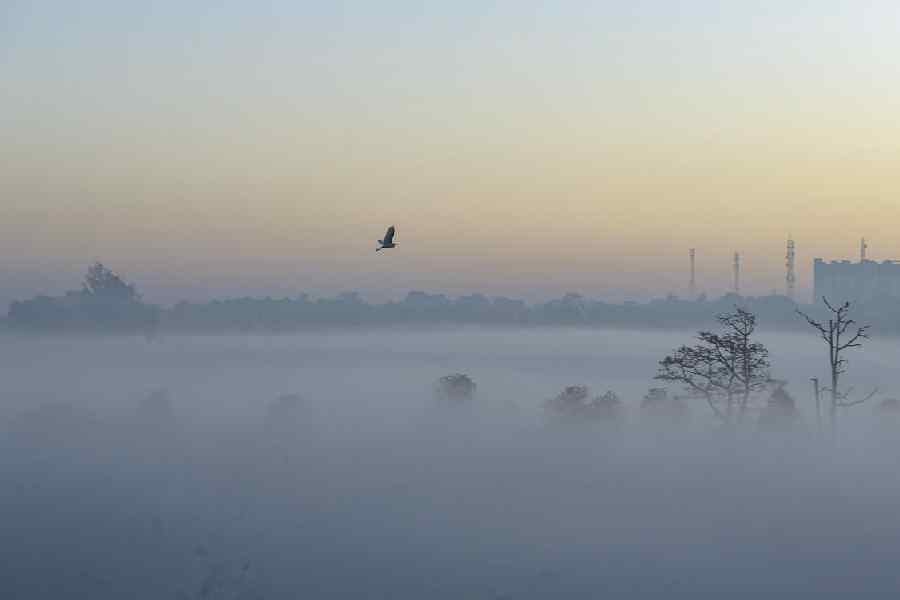 |
| Bone collector: A.R. Sankhyan at his lab |
India?s bone collectors are baffled. Fragments of fossilised human bones discovered years ago in the Narmada valley may be the remains of a pygmy woman who lived in central India in prehistoric times. But her exact perch on the tree of human evolution remains a mystery. The finds ? two collarbones and a lower rib ? belonged to a woman who was between 25 and 35 years of age, and probably had an injury on her left shoulder or arm, says a new study published last week by a senior scientist at the Anthropological Survey of India (ASI) in Calcutta.
The antiquity of the fossils is under debate. The rib and collarbones were found in the late 1990s by ASI scientists, embedded in a dry riverbed near Hathnora village in the Narmada region, close to a site where palaeontologist Arun Sonakia from the Geological Survey of India (GSI) had discovered a skull in 1983. ?It?s now indisputable that the skull and collarbones are the oldest human remains from south Asia,? says Dr Subash Walimbe, a senior paleontologist at the Deccan College in Pune. ?But there is a controversy on what species they represent and how old they are.?
Scientists don?t have a precise date for the bones. They have declined to send the fossils for dating because that will require chipping off a bit of the bones. The estimates of the age are based on indirect evidence ? depth from upper layers of the soil and the identity of prehistoric animals ? horses and hippopotami ? found near the human bones.
?The bones are at least 200,000 years old but may be as old as 500,000 years,? says Anek Sankhyan, an anthropologist at the ASI who analysed the collar-bones and rib to deduce that they belonged to a short, robust pygmy woman. The size and features of the rib and collar-bones suggest that they might have belonged to a four-feet-and-four-inches-tall individual, Sankhyan says in the latest issue of Current Science, published by the Indian Academy of Sciences. Features on the right collar-bone indicate an overuse of the right shoulder, perhaps from an injury on the left shoulder or arm, he adds.
Sankhyan concedes that there is not enough fossil evidence to say whether she was a true pygmy or a dwarf. ?She would have been shorter than the shortest pygmy female among the Andamanese or Onges today,? he says after comparing the fossilised bones from Narmada with skeltons of Andamanese and Onges preserved in the museum at the ASI, a repository of hundreds of human skeletons and bones, up to 10,000 years old, unearthed over the past century at archaeological sites from across India.
The skull from Hathnora has come to represent what paleontologists call the ?Narmada man,? but there is still debate whether it was Homo sapiens, a modern human, or Homo erectus, an earlier species that reigned on earth from about two million years ago to 400,000 years ago.
Sankhyan says his analysis of the rib and collar-bones suggests that they belonged to an archaic Homo sapiens. Kenneth Kennedy, an expert from Cornell University in the US who?s studied the skull, has also suggested that it has more features of Homo sapiens than of Homo erectus.
But GSI?s Sonakia believes that the skull is between 600,000 to 700,000 years old and represents Homo erectus. His estimate is based on ancient magnetic signatures imprinted on the underground soil and rocks. Sonakia also says that it is unlikely that the skull and other bones belonged to the same individual. ?The skull is too large to be the head of such a short person,? he says.
Sankhyan says the archaic Homo sapiens in central India may have been early inhabitants of the subcontinent who were driven out, or replaced, by fresh waves of human migrations into India. According to the current theory of human evolution, all modern humans owe their origins to waves of migrations out of Africa that replaced the Homo erectus elsewhere in the world. Genetic fingerprints that allow scientists to trace back the lineages of modern-day communities also point to recent migrations out of Africa dating back to tens of thousands of years.
The absence of prehistoric human fossils from India has been a major hurdle towards a better understanding of the identity of India?s earliest inhabitants. Bones do not survive easily in Indian soil conditions. Stone tools and tool-making sites up to 1.2 million years old tell scientists that India was home to the Homo erectus. But the four fragments of bones from Hathnora are the only human-like remains from India so far. A fresh survey in the Narmada region will begin next month.











